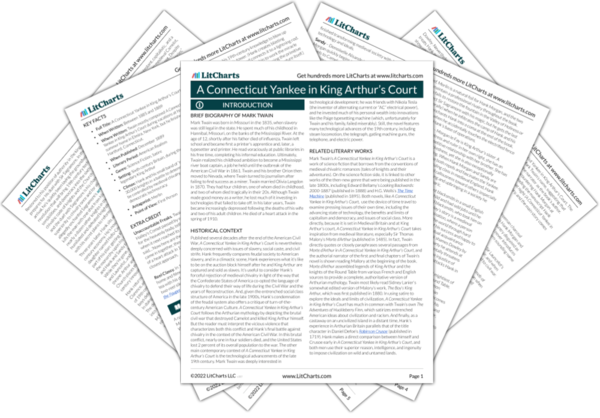Hank’s request for chemicals and tools accentuates the contrast between magic, faith, and superstition—represented by the monks and Merlin—and science. In this way, the book suggests that the Catholic faith lies closer to superstition than science, further demonstrating the superiority of the new, Protestant, scientific world over the superstitious Old World.
